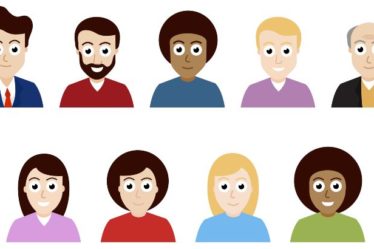
When hiring we look for certain skills, the ones from a job description.
When onboarding, we help new employees to enhance their existing skills.
When assessing the skills, we look for skills gaps.
This is just fine, especially if we are happy with what we need and what we get. But aren’t we willing to innovate, to make some break-throughs, to create something that has not existed before? In such cases, we need more. We need to discover skills that are not in a job description. We need to identify not only skill gaps, but rather find potential hidden skills. Skills that we did not require, yet they can contribute significantly to personal and business success. And then include these skills in the overall development plan—either just to strengthen them or make them key skills of an employee. We can even reposition the employee or create a new job based on the candidate’s abilities.
Interviews can help you discover more
During interviews, we often focus on skills that were posted in a job description. We try to figure out some behaviors, as well, since we also hire for attitudes. Yet, we don’t try often enough to figure out what else the candidate could bring to the company. And it is not enough to ask, “What else can you do?« The people doing the hiring should use their intuition and focus on the tacit knowledge (taken for granted) that the candidate brings to the company, and should certainly discover extra skills through empathic listening. It is not rare to find that the candidate is capable of doing much more than we expect. And as a hiring manager, knowing well your company’s processes and needs, you can find unexpected matches. Note these skills and strengthen them during the onboarding processes, include them in the workflow (micro)learning assigned to the new hire, and make them an integral part of the employee competencies. Or even decide for bold moves, such as a the creation of a new job.
New hire programs can reveal more than expected
I have been involved in several new hire programs, in onboarding programs, or in programs for talented individuals—both internally as well as in the programs our company ran for customers. One of the key goals has always been not only to build the skills these young professionals were supposed to have, but also to discover their hidden skills—the skills and personal characteristics that make these individuals unique. Most of these programs were in-class programs, so we—mentors, facilitators, instructors—really had good insight into the skills and behaviors of the participants. In my (or my colleagues’) reports—despite the fact that the primary goal of the programs was to enhance the technical skills—we noted things like this:
- An excellent team player, able to organize and lead the team
- A great presenter, capable to articulate the message in a structured and impactful way
- Organized, structured, attentive—a candidate for project management
- Excellent writing skills, able to create clean, tidy, and informative documentation
- A candidate for sales, capable to explain technical terms in C-level language, great communicator, and empathic listener
On several occasions as a result of such programs, observations, and reports, we repositioned some individuals to different jobs. They agreed, since during the program they discovered some skills they did not know were so strong in them. People who were meant to be a part of a technical team moved to sales. People who were meant to deal with installations were assigned to help create the documentation.
In summary, not just checking the skills and their levels—with thorough observation and broader focus—you can always discover hidden gems, skills, and tacit knowledge that you can reinforce for the benefit of an individual, as well as the company.
Skills assessment can open different perspectives
Let’s say an organization has problems and they feel they are associated with skills gaps. Instead of trying to guess where the gap is, they decide for skills assessment. Or they even put everything in a broader context of needs assessment. In any case, the best approach is to bring in an external expert; someone who can ask questions the company has never asked. Someone external to the company is more objective, does not feel the pressure of the imminent solution, and is not so obsessed with finding the skills gaps. An external expert will also try to find skills that work, or skills that exist and could work—yet no one has discovered them yet.
I would like to share my personal experience here. I was doing a skills assessment for a strategic department in one of the largest global service providers. They prepared great input (based on my instructions) and the onsite work with managers and employees was a pleasure. It all worked so well, I was so positively surprised. In three continuous days of interviews and brainstorming, I was not only focusing on the issues but tried to identify where the employees and managers were already good. I found out there was a lady who essentially set up everything for fantastic knowledge-sharing in the department—she had content, the platform, the processes. She used it with some colleagues. No one outside her inner circle really knew that about her. So, my suggestion was—let the manager know, let them expand what she does to the entire department, and suddenly some « skills gaps » will close by themselves. Great! We found a solution that had already existed.
Then, during my wrap-up with the manager I asked, « I have never received such great pre-work, such a great input. Who prepared that input, if I may know? » I was astonished. It was the very same lady that also was setting up their knowledge sharing! Not only was I surprised, but her manager was also surprised, as well. Most probably they would never know what a « precious stone » they had in the company if I had been focusing only on « gaps ».
Make a breakthrough with what you already have
To conclude: Whenever you have to deal with skills, do not only look for checking the skills listed in the position description. Do not search only for the missing skills, the weak skills, the skills gaps. Look for the existing skills, the tacit ones or the hidden ones, and make sure—once discovered—to deal with them properly. To use them. To strengthen them (by including them in learning paths, in workflow learning, in knowledge sharing). To make a breakthrough with them—as a side effect, some other “gaps” will close by themselves.

